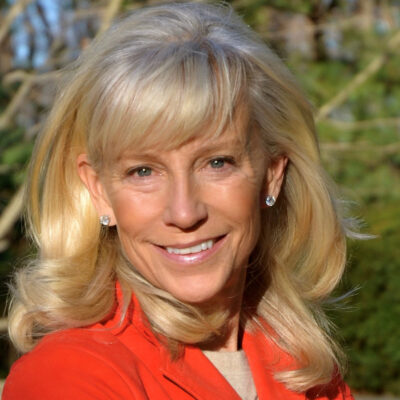Institute Trustee Louise Svanberg has long been interested in oncology, and closely follows the latest advances and innovations in cancer research. A few years ago, this interest took on a new significance when her husband was diagnosed with prostate cancer—which, had they known about it sooner, would have been easier to treat. Then, Svanberg herself was diagnosed with cancer. Now having the dual perspectives of patient and caregiver, she was inspired to take a more active role in supporting cancer research—especially research to advance early detection, a key strategic priority of The Dana-Farber Campaign.
To that end, Svanberg made a $3 million gift to permanently endow the Svanberg Family Chair at Dana-Farber. She was especially interested in increasing awareness for women’s cancers that are not as well-funded or common as other cancers. She met with Laurie H. Glimcher, MD, president and CEO of the Institute and the Richard and Susan Smith Professor of Medicine, and other leaders, to discuss candidates for the chair. “If we can figure out the way to really get early detection working on a broader scale, that could potentially save more people than any treatment,” said Svanberg.
Dipanjan Chowdhury, PhD, who is chief of the Division of Radiation and Genome Stability, as well as co-founder and co-director of the Center for BRCA and Related Genes, was named as the chair’s inaugural incumbent. He and his lab have developed a platform to examine microRNAs in blood for early signs of cancer—specifically for ovarian cancer, for which there is currently no FDA-approved early detection test. They discovered a distinct microRNA pattern associated with a higher risk of the disease, and now they are testing whether this molecular pattern from a blood test can help predict whether a woman with high genetic risk will go on to develop the disease.
“I am extremely honored to serve as the first incumbent of the Svanberg Family Chair,” said Chowdhury. “Early detection is one of our most effective strategies against cancer, and with Louise’s support, we are working toward a future where we are able to treat more cancers at their earliest and most treatable stages and provide renewed hope for patients everywhere.”
As a cancer patient, Svanberg also understands that treatment is only half the story—the emotional aspects of the cancer journey are equally important. “Cancer lives everywhere in our society, and we need to have a better understanding of who it is,” said Svanberg. “We will all be faced with the questions around cancer at some point in our lives. The more we understand and get to know the early signals we can read in ourselves or in others, the better off we will all be. It’s important to get involved in this effort—the giver is the biggest receiver.”



